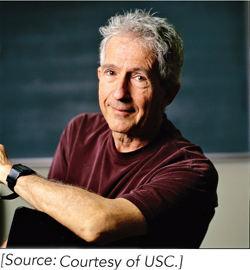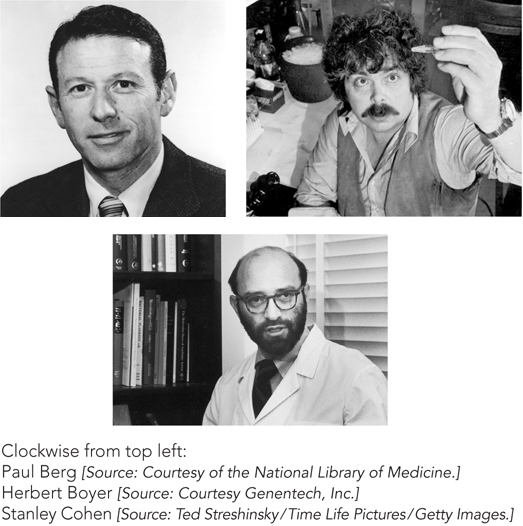Chapter Introduction
7: Studying Genes
211
MOMENT OF DISCOVERY

My lab at SUNY Stony Brook studied genetic variation in mouse ribosomal genes in the days before genomic sequencing or even the ability to readily synthesize DNA oligonucleotides. Using Ed Southern’s method for hybridizing short DNA fragments to complementary sequences in genomic DNA samples, we made restriction enzyme maps of mouse and human ribosomal DNA.
My students borrowed some lambda phage DNA size markers from my colleague Ken Marcu to use in their Southern blotting experiments with the human and mouse DNA. Soon my students began telling me that a particular probe sequence from the nontranscribed region of a mouse ribosomal gene was lighting up a specific lambda phage DNA fragment. I can still see myself standing in the lab, looking at my students’ Southern blots showing the lambda fragment—
Ken told me he had modified the size marker for his work by adding a cloned sequence fragment from a mouse immunoglobulin gene, which immediately set us off in an interesting and unexpected new direction. Using a method called in situ hybridization, in which DNA probes are hybridized to intact chromosomes, we soon discovered that the mouse ribosomal DNA fragment was complementary to sequences on all the mouse chromosomes! So whatever this sequence was, it was interspersed throughout mouse genomic DNA. We ultimately found that this sequence was everywhere in human, bird, and amphibian DNA. We sequenced one of the complementary fragments and discovered that the sequence contained 17 tandem CA repeats. Although the investigation of CA repeat function is still ongoing, the repeats were used extensively for years in the genetic mapping of human diseases and for forensic purposes. I love the serendipity of science!
—Norman Arnheim, on the discovery of interspersed CA repeats in genomic DNA
212
The set of methods encompassed by biotechnology is fundamental to the advancement of modern biology, defining present and future frontiers and illustrating many important principles of the life sciences. With the ability to elucidate the laws governing enzyme catalysis, macromolecular structure, cellular metabolism, and information pathways, researchers can focus on the mechanisms of increasingly complex processes. Cell division, immunity, embryogenesis, sensory perception, oncogenesis, cognition—
A major source of molecular insights about complex biological processes is the cell’s own information archive: its DNA. The complement of genetic information in a cell—
In the 1970s, decades of advances by scientists working worldwide in genetics, biochemistry, cell biology, and physical chemistry came together in the laboratories of Paul Berg, Herbert Boyer, and Stanley Cohen. Solutions began to emerge, yielding techniques for locating, isolating, preparing, and studying small segments of DNA derived from much larger chromosomes. Techniques for DNA cloning paved the way to the modern fields of genomics, transcriptomics, and proteomics: the study of genes, mRNA transcripts, and proteins on the scale of whole cells and organisms (see Chapter 8). These approaches are transforming basic research, agriculture, medicine, ecology, forensics, and many other fields, while occasionally presenting society with difficult choices and ethical dilemmas.
Every student and instructor, when considering the topics we present in this text, encounters a conflict. The methods we describe were made possible by advances in molecular biology. Hence, one must understand the fundamental concepts of DNA replication, RNA transcription, protein synthesis, and gene regulation to appreciate how these methods work. But, at the same time, modern molecular biology relies on these same methods to such an extent that a current treatment of the subject becomes impossible without a proper introduction to the technology. By presenting these methods early in the book, we acknowledge that they are inextricably interwoven with both the advances that gave rise to them and the newer discoveries they now make possible. The background we necessarily provide makes the discussion here not just an introduction to technology but also a preview of many of the fundamentals of molecular biology encountered in later chapters.

This chapter is not designed to consider every method that is relevant to molecular biology. Indeed, we will be discussing many additional techniques in later chapters where they are uniquely relevant to a specific area of study. However, a particular set of methods—